Like anyone else who’s ever looked up at the night sky in any but the smallest cities, I’ve seen light pollution first-hand. Like anyone else even marginally involved in amateur astronomy, I know about the fight against light pollution. And I know that, what with new LED lights and everything, it’s not going to be easy.
When, the other day, I was looking around for images demonstrating the effects of light pollution, it didn’t take me long to find some scary examples – the satellite images tracing human presence on Earth by its light pollution are rather unequivocal, and on Wikimedia Commons, there was an impressive image showing the same region of the night sky when viewed from a dark and from a lighter location:
The images were taken by Jeremy Stanley and are available via Wikimedia Commons under the CC BY 2.0 license. According to the author’s comment, he tried to match the two images’ sky brightness to his memory of how bright the sky appeared to his eyes.
What I didn’t find was an image showing a comparison of two images with the same specs (same camera and lens, same ISO, aperture and exposure time) under different viewing conditions. In the end, I found that I could produce such an example myself, using images I had taken during a trip to South Africa last spring.
During the first leg of our trip, we had visited South Africa’s national science festival, SciFest Africa, which is held annually in Grahamstown in the Eastern Cape Province. Grahamstown has a population of 70.000, and there is some visible light pollution. I took an image of the Milky Way, including the Southern Cross, from the reasonably well-lit courtyard of our hotel:
Some days later, we visited the Sutherland site of South Africa’s National Observatory SAAO, home, among other things, to the 10 m South African Large Telescope (SALT). In the small city of Sutherland, with a population of only about 3000, the observatory a mere 7 miles away and a spirit of cooperation with the astronomers’ needs, light pollution levels are low.
When we took some images of the sky from the backyard of our hotel, the biggest light pollution problem was the moon. Here’s an image that shows, among other objects, the Southern Cross, Alpha Centauri and Carina:
It was only much later that I realized that these images could be used for the light pollution comparison I was looking for. They were both taken with the same camera (Canon EOS 450D = EOS Rebel XSi), the same lens (Tokina 11-16 mm at 11 mm) with the same settings (ISO 1600, aperture 2.8, exposure time 10 seconds). Whatever difference you see is really due to the viewing conditions. To show what you can do with a dark, high-contrast sky, I added a third image. Its only difference to the second image is the exposure time (20 seconds to 10 seconds), which brings out the Milky Way much more strongly.
I combined the images, used GIMP to increase the contrast and saturation on the combined image (to make sure I treated all three images the same), and separated the images again. Here is the result:
The difference between the first two images is fairly drastic. And keep in mind that, as far as light pollution goes, Grahamstown is likely to be fairly harmless, compared with a big, brightly-lit city. (And yes, if I should get the chance, I’ll try to take an image with the same set-up in a larger city!)
This is just one of all too many examples. Through careless lighting, many of us are missing out on one of humanity’s most fundamental experiences: an unobstructed view of the enormity of what’s out there, far beyond space-ship Earth.


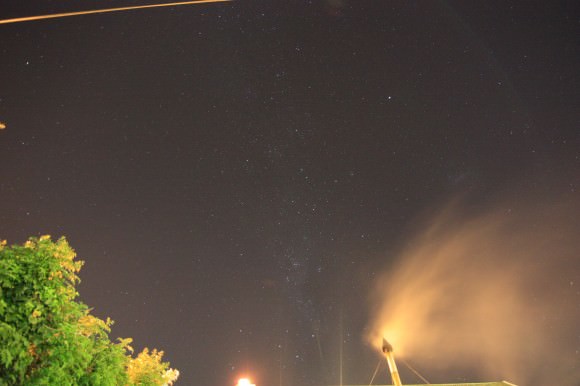
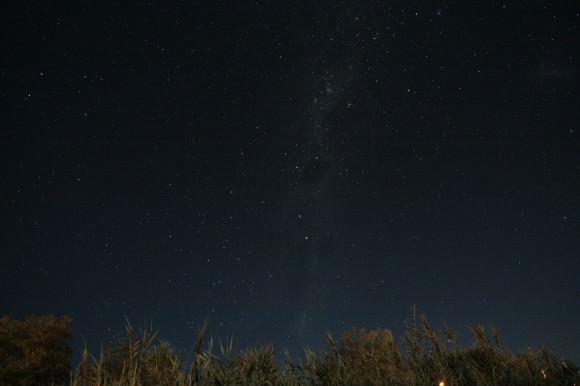
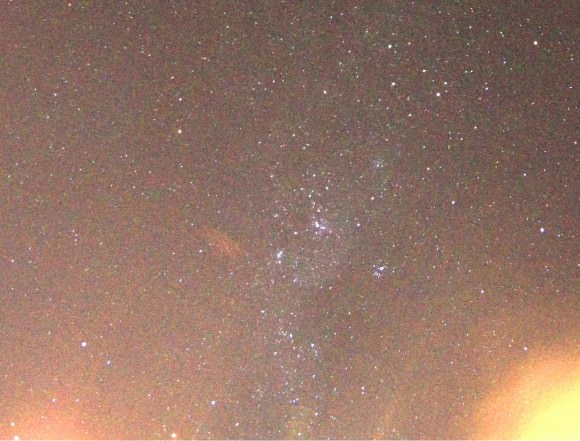
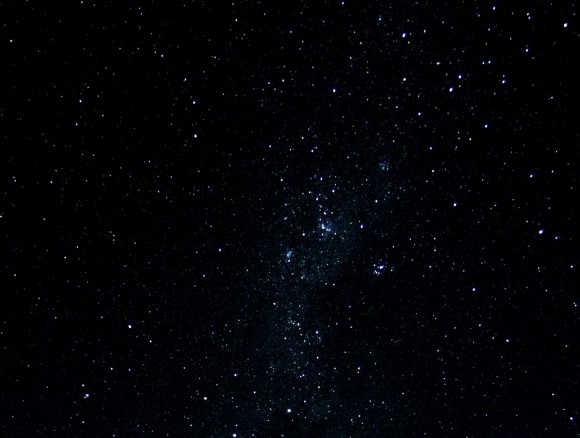
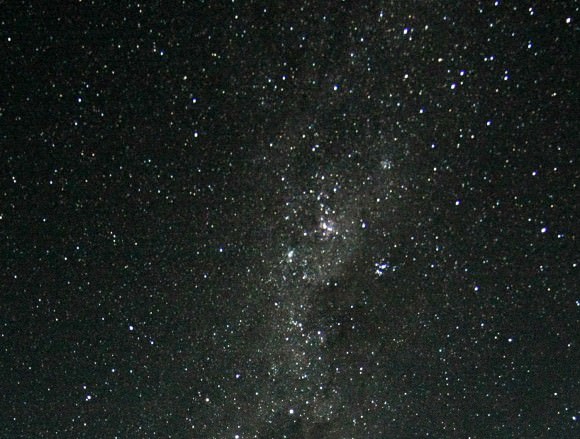
When I first moved to NYC I could barely even sleep at night. There is a street lamp right outside my window and the blinds don’t block the light very well. I’ve even added an extra set of curtains to pull over them and it’s still not dark. Light pollution can hurt people, too. People who have lived in the city their whole lives are used to it but if you have lived in a rural area and move in, it can be pretty rough.
Light pollution is a very big problem. More than half of the energy used today in our world (and by some estimates more than 2/3rds) ends up absolutely wasted as stray light that is going straight up to illuminate the night sky and the fossil fuels burned to create the electricity are contributing to Global Warming! Not only the light is wasted but a substantial amount of heat is generated producing that light and that contributes to Global Warming as well.
It seems that the general thought these days is higher wattage bulbs higher up. The net effect is less illumination on the ground and more light and heat going straight up. What we need is lighting closer to the ground and directed at angles that actually illuminate the ground appropriately. These stratospheric lights that glare in our eyes do nothing except create stark shadows that permit criminals to hide in plain sight. People are mistaken about “security lights”. Criminals don’t want to navigate in darkness … where the light goes so does the criminal! My take is that putting up a “security light” tells the criminal where the target really is. Case in point: A farm raising thoroughbreds at a reasonably remote location north of Indianapolis had no problems until they put up a “security light” on the barn. Within a week several horses were stolen.
If we would use our energy more wisely, we could drastically reduce global warming, crime and have dark skies too! What a concept!
Dramatic image, #1. How sad, that for so many around the globe, the majesty of the night sky – the “enormity of what’s out there” – is so diminished. Rural folk away from urban sprawl, country farmers in broad fields, researchers on polar ice-fields, and mariners on open seas, among the few who are still able to look up into the real Night Sky: privileged to see—feel—the glory and splendor of the heavens, as of old.
The awesome spectacle of Outer Space, through cycle of seasons, over year of calendar time. Earth’s open window into the revolving past – in overwhelming beauty cast. Unobstructed (or framed, as in picture #3, by nature ornamented), and “pollution” free. Views pristine, the human mind lift above the clouds of material day. Dark skies under, the heart stir with inexpressible wonder — and elusive longing. The soul of man moved to ponder existence, what may transcend the world of his life way.
Bold dreams can ignite, man by stars enticed, worlds make journey in flight. Imagination-fired, physical limits unbound; cosmic horizons endless explore! For now mostly confined, alas, these voyages far, to timeless ships of the mind.
In urban seas of glaring light, how fade the riches of elegant night!
We could all move to North Korea. They don’t have much light pollution.